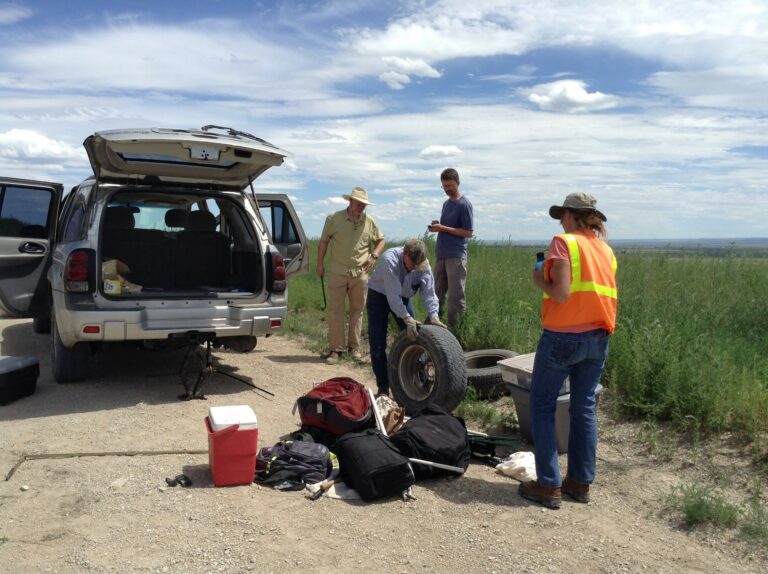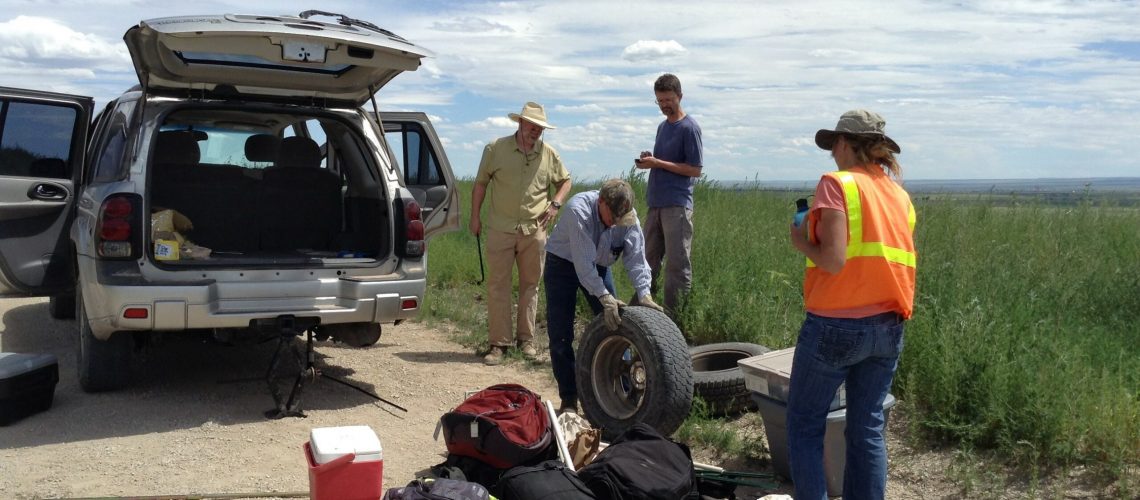By Theresa Barosh, 2018-2019 Sustainability Leadership Fellow and Ph.D. Candidate in the Department of Bioagricultural Sciences and Pest Management
Dear Ecologists [and any scientists working outdoors],
I tried to find 100 field sites of Russian knapweed populations to use in my dissertation research when I started at CSU in the summer of 2014. I frantically travelled Colorado searching for these sites, and I worried over whether private landowners and agencies would allow me access to their properties to look at and experiment on their weeds. At the time, I saw landowners and managers as red tape, a challenge to finding sites and completing my research.
But then, I started making friends with these landowners and managers. Many of them showed genuine interested in my research and my career. I stopped feeling responsible for living up to unrealistic concepts of what a scientist looks like and how they should act. I started being myself in the field.
Four years later, I very much enjoy collaborating with a variety of landowners and managers. I work on city, state, federal, and private land. Below I provide five recommendations for respectfully accessing and working on variable land types through communication with the land stewards:
- Learn the relevant social structure and hierarchies: know who you are talking with. For example, understanding the employee roles of a National Wildlife Refuge can make communication more direct; I ask the Project Leader, rather than a seasonal volunteer, what management techniques were used 10 years ago. Occasionally, people give permission to work on the land when they do not have the full authority to do so. This can be hard to figure out in systems in which the leadership structure may be unfamiliar to the researcher (e.g. leased land or tribal lands). Speaking with all the parties involved, especially those with legal authority, can reduce miscommunication and surprises.
- Speak clearly, with limited jargon. An elevator pitch can help convey the science. Transparency about liability in case of an accident, research methods, and frequency of visits allows landowners to have all the facts when making their decisions. I particularly struggled in randomly assigning weed treatments to my sites because I expected some methods to work better than others. However, the land stewards supporting the research understood when I took the time to explain the need for experimental controls. Clear communication also means finding out which mode of communication your contact prefers: email, a phone call, or an in person conversation. When research changes, hold new conversations to keep everyone involved in the loop.
- Ask questions. Is the landowner or manager interested in your research questions? Do they find alternative questions more important? What have they noticed about the area? Is there jargon about city ordinances or land management techniques that you need explained? I work with a government employee that has been in his position for decades: he can tell me a lot about plant composition over that long time frame. His opinions on management techniques often differ greatly from my own, but talking about those differences always strengthens my convictions and/or helps me to see from a new perspective. Having candid conversations about the research can result in new ideas for methods and research questions. Talking directly with stakeholders helps scientists conduct research that addresses the needs of the public.
- Plan ahead for everything. In nature, the unexpected often occurs. Planning for and discussing the worst-case scenarios can help out immensely when they do happen. When planning to visit the site, give notice long in advance and a day or two in advance. This gives the landowner or manager a chance to 1) tell you no because they changed their mind, 2) let you know of a conflict, or 3) give you valuable site information. Landowners may have noticed something you failed to notice. Last season, I was getting ready to drive five hours to a field site when I called the caretaker of the area. He told me that all the flowers were consumed by grasshoppers and the plants were senesced, saving me the long trip out to the site.
- Share results. Share your enthusiasm. Simply sending your final publication to the contributing landowners is likely not enough. Especially when your research has implications for land management, you need to put the results in accessible language for a broader audience. When managers ask me for recommendations, I give my suggestion and then briefly explain my reasoning. I form these suggestions not only from research, but also from conversations with experienced land managers.
Communication with the public can improve our methods, increase public ecological literacy, and increase awareness (on both sides) of current issues. Let us treat land managers and owners as valuable collaborators.
Thank You Sincerely for Considering These Points,
Theresa Barosh
@Cecidologists
TheresaBarosh.Weebly.com
PhD Candidate in Ecology







